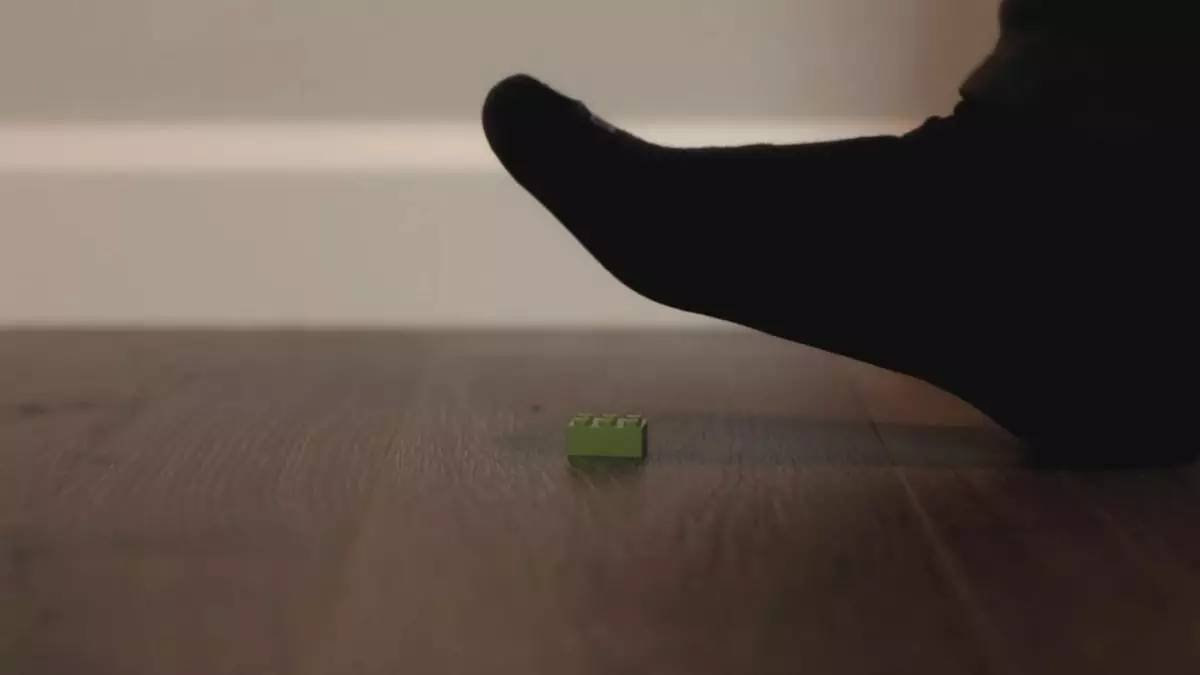In an age where scientific inquiry crosses the bounds of conventional research, peculiar yet intriguing questions often find their way into the public discourse. One such question surfaced on a YouTube platform, igniting a wry fascination among viewers: which Lego brick inflicts the most pain upon unsuspecting feet when stepped on? This whimsical yet valid line of inquiry delves into the intersection of childhood nostalgia and the unyielding truth of adult discomfort. YouTuber Nate Scovill took it upon himself to explore this pain infliction scientifically, transforming a mundane question into an entertaining yet educational experiment.
Scovill commenced his endeavor with a DIY approach, setting up an experimental rig designed to simulate human foot pressure. His approach, tinged with humor, involved an arm mechanism that could effectively deliver varying degrees of weight onto the chosen Lego pieces. A cardboard surface served as the measurement backdrop, allowing Scovill to assess the “gradient of damage” that each Lego brick could inflict. Herein lies the charm of his initiative: it’s not just about curiosity but also about employing an inventive tactic to answer a burning question.
Surprisingly, Scovill avoided the straightforward method of simply stepping on the pieces himself. Instead, he humorously remarked on his reluctance to display his feet to the audience, favoring a more scientific approach to maintain a reflective sense of dignity. Within the playful jest, Scovill’s ingenuity shines through, inviting us all to ponder the lengths one might go to preserve their privacy in a heavily scrutinized digital age.
As the experiment unfolded, the initial findings began to surface. Scovill reported notable pain levels induced by some less common Lego designs, like a pointed wizard’s hat that exceeded expectations due to its sharp features. However, what stood out most was a vintage Lego wheel, infamous for its sharp metal axle that proved catastrophic when placed in a downward position. The wheel’s potential to inflict genuine harm highlights not just the hazards of these playful toys but also raises questions about the collectibles’ designs over time.
Interestingly, the conversation took a darker turn as Scovill noted the wheel’s axle, which could rust and introduce “toxic damage.” This finding serves as a grim reminder of what fun can sometimes entail—an element of danger lurking within childhood playthings.
Unperturbed by minor setbacks, Scovill proceeded to innovate further by fabricating a foot model out of ballistics gel—an ideal mimicry of human tissue inspired by popular science shows like Mythbusters. However, the endeavor did not come without its share of challenges. While aiming for precision, he inadvertently caused damage to the gel foot during testing. Yet, in true scientific spirit, he adapted his method, placing the gel foot squarely atop the Lego pieces for a second round of punishment.
The outcome illuminated the capabilities of Lego bricks to penetrate even synthetic material, cementing their reputation as more than mere toys, but tools of unintended pain. The visual imagery of the pointy bricks embedding into the gel is not easily forgotten, conjuring memories for many who have unwittingly faced the wrath of such toys.
As amusing as Scovill’s study may appear, it brings forth a reflection on the duality of childhood innocence and adult skepticism. While the Lego question may seem frivolous, it exemplifies how playful inquiry can combine scientific rigor with a light-hearted spirit. Simultaneously, it echoes the universal experience of facing small, sharp objects that can disrupt a carefree moment, much like stepping on an upturned plug in the dark—a scenario all too familiar to many.
In closing, Scovill deserves commendation not just for undertaking such a peculiar venture but for transforming it into an exploration of the scientific method that celebrates creativity. Merriment and science can, indeed, coalesce to answer even the most unexpected of questions, urging viewers to consider the world, and perhaps even their own wellbeing, through a playful and inquisitive lens.

